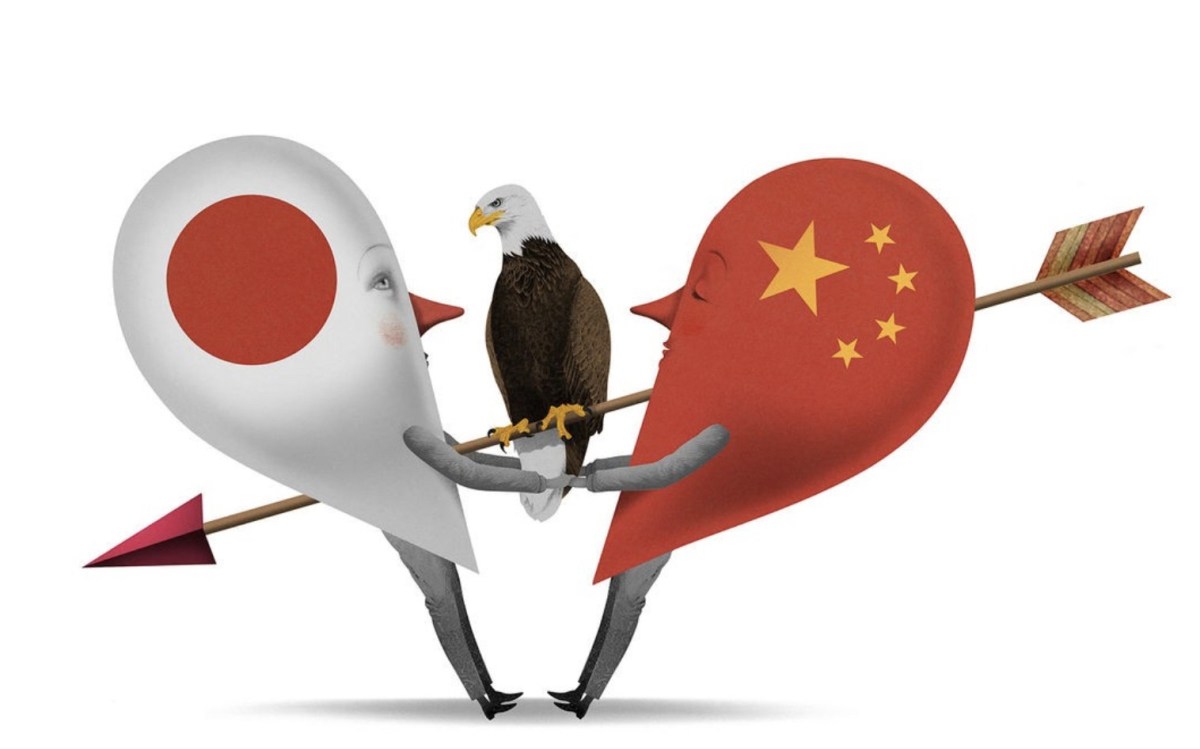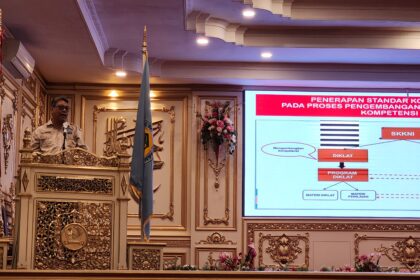[ad_1]
TOKYO – As the fog of economic war lifts, the ways in which China outmaneuvered Donald Trump’s White House are becoming clearer. Nowhere more so than in Japan, a nation the former US president tried hard to pull out of China’s commercial orbit.
Though Trump’s decoupling-from-China imperative was rather America-centric, he cajoled Tokyo early and often to join the battle. And Shinzo Abe, prime minister from 2012 to 2020 and old-school Japanese nationalist, was happy to oblige.
Abe pursued an ambitious “re-shoring†scheme. And in the last six months of his premiership, which ended last September, he leaned into supply chain disruptions related to the coronavirus. He even sweetened the deal, offering subsidies to companies bringing jobs back from China.
The scheme hasn’t gone well, if a September 2020 survey by the Japan External Trade Organization (JETRO) is any guide. JETRO found that only 7.2% of Japanese companies operating in China either planned or considered shifting production out of China. That is down from an already paltry 9.2% in 2019.
The real figure is arguably even lower. Given the historical antipathy between Japan and China, few CEOs want to admit they’re not at least mulling decreasing exposure to President Xi Jinping’s nation. It follows, then, that the number of manufacturers scouting production sites on the other side of the East China Sea is far smaller.
That said, Abe’s team — and Trump’s, too — should’ve known the policy had little potential from Toyota Motors. Top-down Tokyo loves a precedent and none matters more than what the global vanguard of Japan Inc does.
Back in 2015, Toyota CEO Akio Toyoda reaffirmed the auto giant’s intention to follow where the growth is. And that meant — and still means — China. Xi’s economy was a major beneficiary of Toyota’s plan that year to lavish $1.4 billion on new factories.
As recent as May 2020, Honda Motor was ramping up China plants. A month later, Toyota unveiled a joint venture with five mainland companies to develop fuel cell systems for commercial vehicles.
The partners include China First Automobile Works and Guangzhou Automobile Group. In October, Toyota agreed to supply its gasoline-electric hybrid system to Guangzhou Auto. That marked the first time it shared the technology with a foreign country.
Japan’s reliance on China reflects economic realpolitik. Twenty years ago, its output was four times bigger than China’s. A decade later, in 2010, China surpassed Japan in GDP terms. Now, it is about three times larger than Japan. Talk of decoupling just isn’t practical given who is buying the bulk of Japan’s goods.
Though “avoiding over-dependence†on China is a key goal for Japanese CEOs, says economist Naoto Saito of Daiwa Institute of Research, its “unthinkable†for them “not to consider†the Chinese market as a manufacturing site.
China’s idiosyncrasies are something trading nations just have to get used to.
“Indeed,†says John Lee, a senior fellow at the Washington-based Hudson Institute, “it seems that international firms have long baked-in considerations of the political, institutional, legal, and regulatory risks associated with the Chinese political economy, which are offset by short-term rewards.â€Â
Lee notes that “even at the height of US-China economic tensions, global foreign direct investment into China continued to increase,†generally speaking. “The reasons to stay in China are not difficult to understand,†Lee notes.
That is despite intense pressures from both Tokyo and the Trump administration. Trump’s White House pressed the issue with bans on any company selling US goods to Chinese telecom giant Huawei Technologies. Abe’s government, urged on by Trump’s, began offering subsidies to Japanese companies exiting China — $2.2 billion to start.
Last August, Abe said, “it’s absolutely necessary to strengthen supply chains in Japan and diversify those overseas in order to secure more sources of supply.†Supply chain changes, Abe said, “need to be implemented with a long-term perspective, and not just to reduce costs and increase profits.â€
Abe’s successor, Yoshihide Suga, has been pushing for Southeast Asia to become Japan Inc.’s Plan B. And indeed, icons from Nintendo to Kyocera to Ricoh to Sharp have been diverting some production to Vietnam and Thailand.
No competitor, though, can rival China’s scale. Given its so far successful battle against Covid-19, 2.3% growth in 2020 and prospects for 8% this year, Japan Inc would seem to have few incentives to look back. Japanese CEOs, it seems, get something that neither Trump nor Abe did: the game is learning to live with China, not to be used as proxies in US-China tensions.
This tale, though, is as much about missed opportunities on Japan’s part as China’s rise.
If Abe had used his nearly eight years in power creating a new market model out of a shrinking and aging population, high taxes, land and labor costs and chronically low productivity, the Toyotas of Japan might be happy to “re-shore†operations.
Since Abe accomplished none of these goals, multinational companies have little incentive to produce in Asia’s No 2 economy.
Even as China’s welcome mat to foreign companies becomes more complicated under Xi’s leadership, Japan Inc has Vietnam, Thailand and Indonesia standing at the ready to break ground on new factories. Yet what’s most intriguing as 2021 gets underway is how little the trade war — or Abe’s sycophantic support of Trump — did to turn Japan away from China.
In a February 10 deep dive on an outcome Trump and Abe surely abhor, Nikkei Asia zeroed in on Panasonic Corp’s long and event-rich history betting on the Middle Kingdom since 1987. That year, the now 103-year-old electronics powerhouse inked its first mainland joint venture. Today, China accounts for $16 billion, or fully one quarter, of Panasonic’s business.
That bet, by then-chairman Konosuke Matsushita, looks sound today as Xi’s economy produced half of the globe’s refrigerators and washing machines and 85% of all air conditioners. Yet along the way, China’s homegrown giants like Haier and Midea came to hold a dominant place in the international appliance space.
As disorienting as that sounds, it prodded Japanese companies that saw the writing on the commercial wall to adapt and move upmarket. Case in point: Panasonic going even bigger into revolutionizing the battery game.
Though Panasonic’s legacy had long been invention and innovation in appliances, lighting, radios and televisions, its true calling, it turns out, is R&D on cutting-edge rechargeable batteries.
In 2014, when Tesla’s Elon Musk was setting up his initial $5 trillion battery “Gigafactory†in the Nevada desert, Panasonic topped the list of partners to which he turned. For Panasonic, innovation in the renewable energy space is a matter of following global demand where it’s heading, not doubling down on the past.
It was relying on old strategies that knocked both Abenomics and Trumponomics off course. What Trump and Abe shared in common, other than fake populism, was a devotion to 1980s-style “trickle-down†economics.
Both prioritized weak currencies, excessive monetary easing and tax tweaks to boost economies that really needed bold structural upgrades. And both, by looking backward instead of to the future, made life easier for Xi’s Communist Party-led China.
If things had gone differently in Tokyo, Xi might be contending with a very different environment as 2021 begins. He and Abe took the reins in their respective capitals around the same time in late 2012. Imagine if Abe had hit the ground running, taking the rare majorities in both houses of parliament he enjoyed out for a ride.
Imagine where Japan might be now if Abe cut Tokyo’s notorious bureaucracy, loosened labor markets, catalyzed a startup boom, empowered women, increased productivity or devised a more creative energy policy.
Imagine if Abe struck a quid pro quo with corporate Japan: lower taxes in exchange for raising wages and R&D investment. Or if Abe went the other way: penalties for CEOs hoarding excessive amounts of profits, engaging in innovation-killing cross-shareholdings or failing to hire outside directors to serve on boards.
What if Abe had supersized the special enterprise zone model across his nation of 126 million? Increasing the ease of doing business, offering ultralow taxes on entrepreneurs, creating safety nets to encourage risk-taking and setting up publicly-funded — or partially subsidized — venture capital schemes would’ve propelled Japan Inc into the 21st century.
That none of these moves happened on Abe’s watch left the field wide open for China Inc. It helps, surely, that Xi’s party has been actively building economic muscles, while Japan’s atrophy apace.
There’s ample and valid criticism of Xi’s tenure. Beijing’s clampdowns on the internet, press freedom, Hong Kong’s autonomy and its expansionist ambitions in the South China Sea are all self-inflicted wounds to Beijing’s global soft power. Human rights groups are angling for a boycott of next year’s Winter Olympics in Beijing amid alleged abuses against ethnic minorities.
But if Xi’s government has proven anything it’s a knack for multitasking. Case in point: a massive “Made in China 2025†project angling to lead the future of aerospace, artificial intelligence, automation, biotechnology, digital currencies, electric vehicles, 5G advancements, renewable energy, robots, semiconductors and creating new waves of tech “unicorns.â€
Since replacing Abe in September, Suga has done zero to put Japan back into a game Xi’s China aims to dominate.
There’s great uncertainty about the extent to which Sino-US relations might improve on President Joe Biden’s watch. One wild card: how Biden proceeds on US sanctions against China Inc champions like Huawei.
It’s no small question considering Japanese companies in 2020 tallied roughly $12 billion in sales to Huawei. A Biden administration official quoted in agency reports said this week any changes to US trade policy “will not be immediate, and in the meantime we are not lifting the tariffs.â€
Suga also needs to mind the geopolitics. Beijing’s territorial claims in the seas surrounding the mainland threaten to blow up at any moment. Any encounter between Japanese and Chinese vessels near the disputed Senkaku Islands could upend relations.
Xi might react badly to Suga coaxing the US back into the Trans-Pacific Partnership trade pact. Biden rejoining a trade deal meant to contain China’s rise could disrupt the Beijing-Tokyo commercial relationship anew.
But China’s scale makes it a non-negotiable production site that Japan will simply have to learn how to navigate. Call it “decoupling kabuki,†says economist Scott Kennedy at the Center for Strategic and International Studies, a Washington think tank.
What we’re talking about here is “Japan’s effort to reset, not end its relationship with China,†he said.
[ad_2]
Source link










